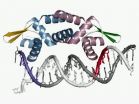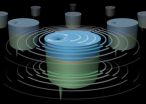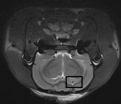(Press-News.org) A team of researchers investigating the genome of a healthy supercentenarian since 2011 has found many somatic mutations – permanent changes in cells other than reproductive ones – that arose during the woman's lifetime. Led by Erik Sistermans and Henne Holstege from the VU University Medical Center in Amsterdam, the team recently published its findings in the journal Genome Research as reported by GenomeWeb.
While previous studies have examined mutations that arise in certain disease conditions such as leukemia, Sistermans said that it was not well known how many mutations might appear in the genomes of healthy cells, according to the GenomeWeb report.
At the time of her death at the age of 115, the subject woman, called W115 by the researchers, was the second oldest person in the world and showed no signs of vascular disease or dementia. By donating her body to science, she allowed researchers to study her organs and genome.
The researchers hypothesized that white blood cells, which divide frequently, would have many more somatic mutations than brain cells, which seldom divide. Thus the whole genomes of W115's blood and brain cells were sequenced using SOLiD technology from Life Technologies. Analyses were then done to look for mutations present in the blood cells but not the brain cells.
These analyses involved numerous computations, some of which were done by Wayne Pfeiffer on the Triton cluster at the San Diego Supercomputer Center at the University of California, San Diego under a National Institutes of Health grant. Pfeiffer said that the initial analyses identified thousands of putative somatic mutations, many of which were incorrect because of sequencing errors. Filters were subsequently developed to select the mutations most likely to be somatic.
Two types of mutations were considered: single nucleotide variants (SNVs) and short insertions or deletions (indels). Filtering of the latter was particularly compute-intensive and was done at SDSC. Thousands of core hours were consumed, and some steps required more than 64 gigabytes of shared memory, according to Pfeiffer.
After filtering, many of the highly likely and moderately likely somatic mutations were tested by targeted sequencing using newer Ion PGM sequencers, also from Life Technologies.
Based on these validation tests, the researchers estimated that there were about 450 somatic mutations in the non-repetitive genome of the white blood cells studied, corresponding to an average of four mutations per year. These mutations, they noted, were not present in the breast cancer that W115 had at age 100 or in the gastric tumor she had at the time of her death. About 95% of the somatic mutations were SNVs rather than indels.
"Of 376 highly likely somatic SNVs, only four mapped to regions in genes that code for proteins, whereas most were in genomic regions predicted to have neither adverse nor favorable impact on genetic fitness," said Pfeiffer. "The message here is that one can have lots of somatic mutations and still live long, provided the mutations do not affect genetic fitness."
"It is important to note that white blood cells differ from most other cells in the body and are especially prone to acquiring somatic mutations," said Mark A. Miller from SDSC, who helped interpret the results. "Large numbers of white blood cells are generated from relatively few hematopoietic stem cells. Because white blood cells divide continually throughout a person's lifetime, it is possible for non-harmful somatic mutations to accumulate."
"These mutations accumulate in clones that comprise only some of the white blood cells, which makes their detection more difficult," explained Pfeiffer. "For W115, about 64% of the white blood cells comprised a dominant clone, which was where the mutations were found, while about 44% of the white blood cells were in a second clone subsidiary to the larger one. The remaining cells were presumably in smaller clones that were below our detection limit."
The researchers concluded that there is a significant somatic mutation background among white blood cells, even in healthy blood.
INFORMATION: END
SDSC resources, expertise used in genomic analysis of 115 year-old woman
Sequencing of blood and brain samples reveals background of somatic mutations
2014-04-30
ELSE PRESS RELEASES FROM THIS DATE:
N-glycan remodeling on glucagon receptor is an effector of nutrient-sensing by HBP
2014-04-30
TORONTO -- A possible therapeutic target for control of blood glucose in the treatment of type 2 diabetes and obesity has been identified by Dr. Anita Johswich and her colleagues. Their findings were published in Journal of Biological Chemistry, online April 17, 2014.
An imbalance in the competing action of insulin and glucagon is widely viewed as a critical factor in onset of type 2 diabetes, a relentlessly increasing health problem. A delicate balance between two hormones controls blood glucose levels day and night. After a meal, blood glucose rises, which stimulates ...
A protein key to the next green revolution sits for its portrait
2014-04-30
If you pull up a soybean or bean plant and shake off the dirt, you might see odd swellings or bumps, like rheumatic finger joints, on its roots. Inside the cool, soil-covered bumps are bacteria that are making nitrogen with the help of an enzyme, something chemical factories can do only with the help of a catalyst and at high temperature and pressure.
The bacteria, typically members of the genus Rhizobia, break the strong triple bond between the nitrogen molecules in the air and repackage the nitrogen atoms in chemical compounds the plant can use. In return, the plant ...
'Charismatic' organisms still dominating genomics research
2014-04-30
Decades after the genomics revolution, half of known eukaryote lineages still remain unstudied at the genomic level--with the field displaying a research bias against 'less popular', but potentially genetically rich, single-cell organisms.
This lack of microbial representation leaves a world of untapped genetic potential undiscovered, according to an exhaustive survey conducted by UBC researchers of on-going genomics projects. The survey results are published in the May issue of Trends in Ecology and Evolution.
"We're still mostly analyzing the same well-known eukaryotic ...
Deep origins to the behavior of Hawaiian volcanoes
2014-04-30
Kīlauea volcano, on the Big Island of Hawai'i, typically has effusive eruptions, wherein magma flows to create ropy pāhoehoe lava, for example. However, Kīlauea less frequently erupts more violently, showering scoria and blocks over much of the surface of the island. To explain the variability in Kīlauea's eruption styles, a team including Bruce Houghton, the Gordon Macdonald Professor of Volcanology in Geology and Geophysics at the University of Hawai'i at Mānoa (UHM) School of Ocean and Earth Science and Technology (SOEST) and colleagues from ...
New tool for Joint Lab to investigate the chemistry of nature
2014-04-30
This news release is available in German. HZB-scientist Emad Aziz, who leads the Joint lab between HZB and Freie Universität Berlin, has developed and installed a new tool to investigate ultrafast dynamics in solutions and at interfaces with the use of ultrashort Laser pulses. Liquid phases are a natural environment for many interesting processes in chemistry and biology, and short light pulses allow insights into electronic and structural dynamics of molecules and molecular complexes. In particular, photoelectron spectroscopy with extreme ultraviolet (XUV) radiation ...
Harnessing magnetic vortices for making nanoscale antennas
2014-04-30
UPTON, NY—Scientists at the U.S. Department of Energy's Brookhaven National Laboratory are seeking ways to synchronize the magnetic spins in nanoscale devices to build tiny yet more powerful signal-generating or receiving antennas and other electronics. Their latest work, published in Nature Communications, shows that stacked nanoscale magnetic vortices separated by an extremely thin layer of copper can be driven to operate in unison, potentially producing a powerful signal that could be put to work in a new generation of cell phones, computers, and other applications.
The ...
NOAA-led researchers discover ocean acidity is dissolving shells of tiny snails off West Coast
2014-04-30
A NOAA-led research team has found the first evidence that acidity of continental shelf waters off the West Coast is dissolving the shells of tiny free-swimming marine snails, called pteropods, which provide food for pink salmon, mackerel and herring, according to a new paper published in Proceedings of the Royal Society B.
Researchers estimate that the percentage of pteropods in this region with dissolving shells due to ocean acidification has doubled in the nearshore habitat since the pre-industrial era and is on track to triple by 2050 when coastal waters become 70 ...
Neiker-Tecnalia studies the effects of climate change on Tempranillo grape wines
2014-04-30
Climate change is set to affect the quality of the wines of the Tempranillo grape variety, according to the conclusions of a piece of research conducted by the Basque Institute for Agricultural Research and Development Neiker-Tecnalia, in collaboration with the University of Navarre and the Aula Dei (EEAD) Experimental Station of the National Council for Scientific Research (CSIC). Scientists from these bodies have studied the behaviour of the vines in conditions of climate change; in other words, higher temperature, increased presence of CO2 and greater environmental aridity. ...
7.0T NMR assesses changes in hippocampal neurons in animal models of Alzheimer's disease
2014-04-30
Magnetic resonance spectroscopy can quantitatively analyze in vivo abnormalities of biochemical metabolism within brain tissue in a noninvasive and non-radioactive manner. Compared with 3.0T magnetic resonance spectroscopy, high-field magnetic resonance spectroscopy (≥ 7.0T) exhibits high spatial resolution and density resolution, microscopic imaging of the living body, and obtains both high scanning resolution and result precision within a shorter scan time, thus providing a higher value in clinical diagnosis. In a recent study reported in the Neural Regeneration ...
A researcher from the University of Cádiz discovers 18 new species of molluscs
2014-04-30
Molluscs are invertebrates that make up one of the most numerous groups in the animal kingdom. They are everywhere, from great heights of over 3,000m above sea level to ocean profundities of over 5,000m deep, in polar and tropical waters and they tend to be common elements on coastlines around the world. Within this animal group are found the nudibranchs, characterized among other things, for not having shells and being brightly coloured. This colouring alerts their predators to their toxicity. Within this group, in turn, we can find the Aeolidiidae family.
This family ...
LAST 30 PRESS RELEASES:
The Journal of Nuclear Medicine ahead-of-print tip sheet: December 12, 2025
Smarter tools for peering into the microscopic world
Applications open for funding to conduct research in the Kinsey Institute archives
Global measure underestimates the severity of food insecurity
Child survivors of critical illness are missing out on timely follow up care
Risk-based vs annual breast cancer screening / the WISDOM randomized clinical trial
University of Toronto launches Electric Vehicle Innovation Ontario to accelerate advanced EV technologies and build Canada’s innovation advantage
Early relapse predicts poor outcomes in aggressive blood cancer
American College of Lifestyle Medicine applauds two CMS models aligned with lifestyle medicine practice and reimbursement
Clinical trial finds cannabis use not a barrier to quitting nicotine vaping
Supplemental nutrition assistance program policies and food insecurity
Switching immune cells to “night mode” could limit damage after a heart attack, study suggests
URI-based Global RIghts Project report spotlights continued troubling trends in worldwide inhumane treatment
Neutrophils are less aggressive at night, explaining why nighttime heart attacks cause less damage than daytime events
Menopausal hormone therapy may not pose breast cancer risk for women with BRCA mutations
Mobile health tool may improve quality of life for adolescent and young adult breast cancer survivors
Acupuncture may help improve perceived breast cancer-related cognitive difficulties over usual care
Nerve block may reduce opioid use in infants undergoing cleft palate surgery
CRISPR primes goldenberry for fruit bowl fame
Mass General Brigham announces new AI company to accelerate clinical trial screening and patient recruitment
Fat tissue around the heart may contribute to greater heart injury after a heart attack
Jeonbuk National University researcher proposes a proposing a two-stage decision-making framework of lithium governance in Latin America
Chromatin accessibility maps reveal how stem cells drive myelodysplastic progression
Cartilaginous cells regulate growth and blood vessel formation in bones
Plant hormone allows lifelong control of proteins in living animal for first time
Swedish freshwater bacteria give new insights into bacterial evolution
Global measures consistently underestimate food insecurity; one in five who suffer from hunger may go uncounted
Hidden patterns of isolation and segregation found in all American cities
FDA drug trials exclude a widening slice of Americans
Sea reptile’s tooth shows that mosasaurs could live in freshwater
[Press-News.org] SDSC resources, expertise used in genomic analysis of 115 year-old womanSequencing of blood and brain samples reveals background of somatic mutations




